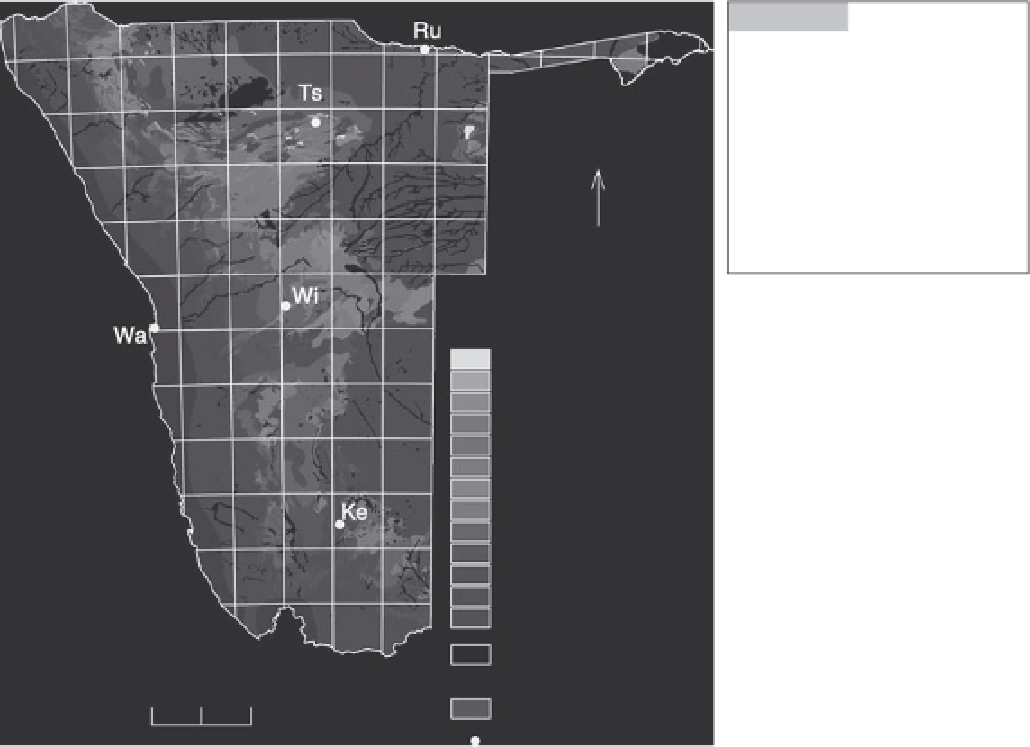Environmental Engineering Reference
In-Depth Information
Figure 3.18
Map of Namibia
showing simulated travel times
for infiltrating water to reach the
water table (with kind permission
from Springer Science+Business
Media:
Environmental Geology
,
“Numerical modeling of ground-
water vulnerability: the example
Namibia”, v. 50, 2006, p. 247, M.O.
Schwartz, Figure 7).
N
Residence time (yrs)
<1
1- 2
2-3
3- 5
5-7
7-10
10-15
15-25
25-50
50-100
100-200
200-500
>200-500
River, dam, pan,
alluvial sediment
<50 mm/yr rainfall
To wn
0
100
200
KILOMETERS
into the categories of low or very low vulner-
ability (
Table 3.3
).
models are easy to apply and often require only
readily available data. They also are amenable
to application with a GIS. Complex models can
more accurately represent the physics of water
flow and can therefore shed additional light on
the parameters that most affect recharge rates,
but there can be considerable expense, in terms
of data collection and compilation, in applying
complex models.
As with any method for estimating recharge,
assumptions inherent in model design and
application should be fully scrutinized before,
during, and after application. Assumptions on
processes occurring within a hydrologic sys-
tem vary from model to model. Throughout
this chapter important assumptions have been
noted, but readers considering the use of any
of the modeling approaches discussed here are
urged to consult individual model documenta-
tion and references for more complete discus-
sion of the underlying assumptions.
3.9 Discussion
Hydrologic models are useful tools for estimat-
ing groundwater recharge. In addition to pro-
viding information on recharge rates, models
can provide insight into features of the hydro-
logic system that influence those rates. Models
can be used to predict effects of changes in cli-
mate, land use, and water management strat-
egies on recharge rates. Inverse modeling can
be used to quantify the uncertainty in model-
predicted recharge rates if the model accurately
represents the hydrologic system. There is a
wide range of complexity in models, and there
are tradeoffs in terms of benefits between parsi-
mony and complexity (Hunt
et al
.,
2007
). Simple





